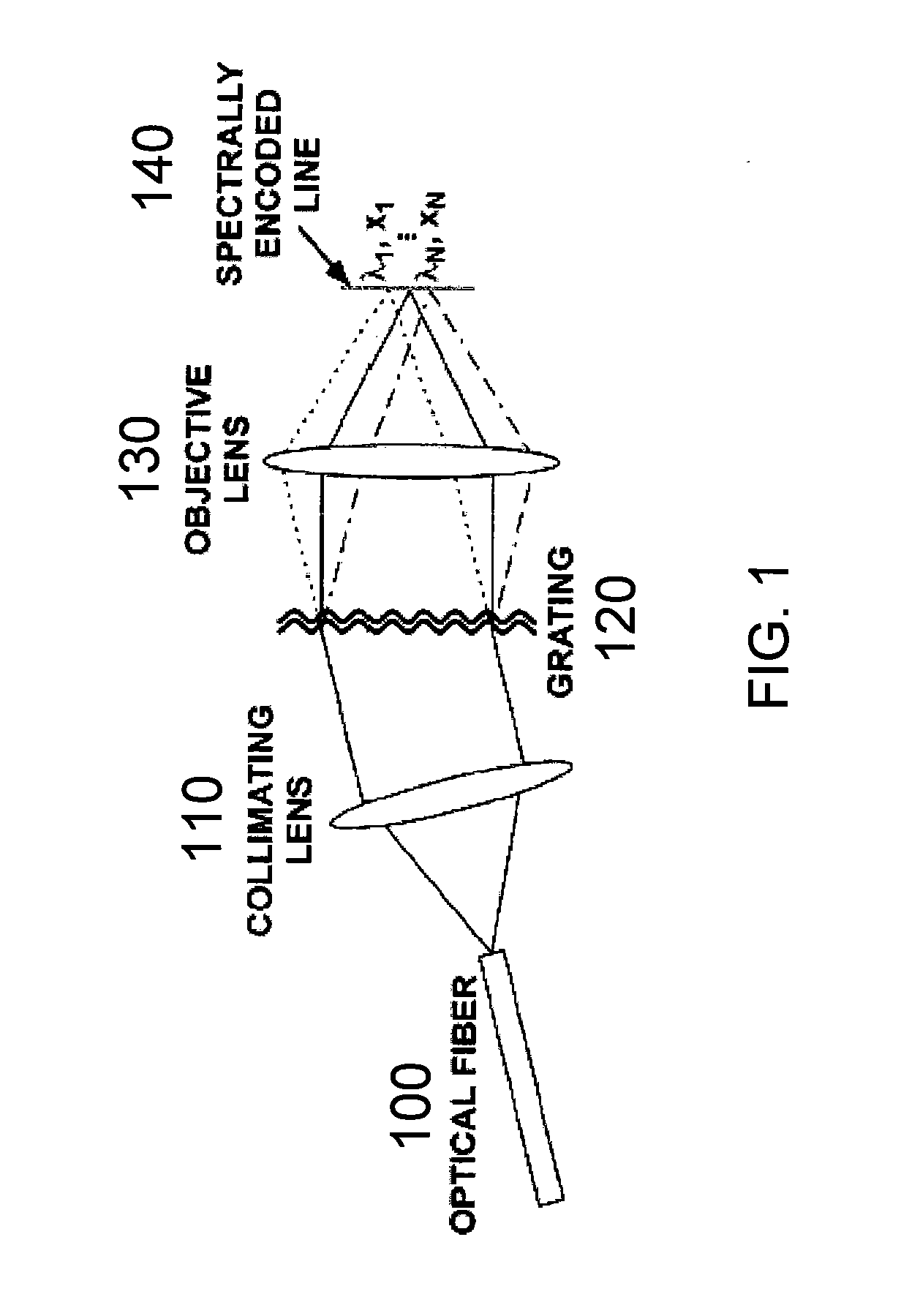Method and apparatus for optical imaging via spectral encoding
a technology of optical imaging and spectral encoding, applied in the direction of spectroscopy diagnostics, instruments, catheters, etc., can solve the problems of limiting the options for screening for pre-neoplastic conditions, significant challenges in identification and diagnosis, and removal of tissue from patients
- Summary
- Abstract
- Description
- Claims
- Application Information
AI Technical Summary
Benefits of technology
Problems solved by technology
Method used
Image
Examples
Embodiment Construction
[0090] In accordance with exemplary embodiments of the present invention, a method and apparatus for endoscopic confocal microscopy is provided which circumvents the need for miniature, high-speed scanning mechanisms within a probe. Spectrally encoded confocal microscopy (“SECM”) is a wavelength-division multiplexed confocal approach that may be used. SECM utilizes a broad bandwidth light source and can encode one dimension of spatial information in the optical spectrum.
[0091] An exemplary SECM technique is shown in FIG. 1. The output from a single-mode optical fiber 100, which may be located at a distal end of a probe, can be collimated by a collimating lens 110, and then illuminate a dispersive optical element (such as, e.g., a transmission diffraction grating 120). An objective lens 130 can then focus each diffracted wavelength to a distinct spatial location within the specimen, resulting in a transverse line focus 140 where each point on the line may be characterized by a disti...
PUM
 Login to View More
Login to View More Abstract
Description
Claims
Application Information
 Login to View More
Login to View More - R&D
- Intellectual Property
- Life Sciences
- Materials
- Tech Scout
- Unparalleled Data Quality
- Higher Quality Content
- 60% Fewer Hallucinations
Browse by: Latest US Patents, China's latest patents, Technical Efficacy Thesaurus, Application Domain, Technology Topic, Popular Technical Reports.
© 2025 PatSnap. All rights reserved.Legal|Privacy policy|Modern Slavery Act Transparency Statement|Sitemap|About US| Contact US: help@patsnap.com



